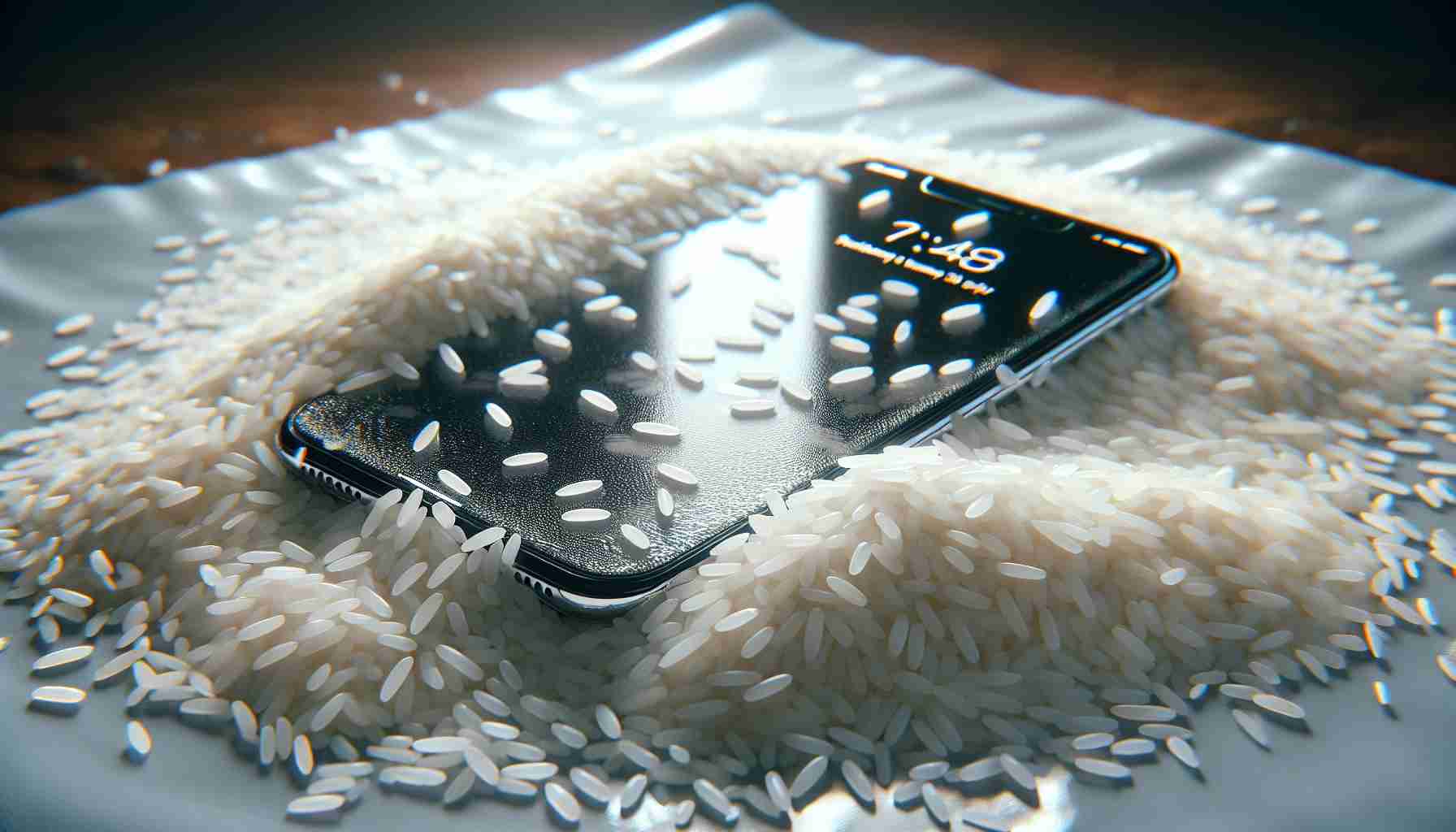Everyone has heard the age-old advice: if your electronic device gets wet, immediately put it in a bag of dry rice and wait several hours for the rice to magically absorb all the moisture. However, it turns out that this popular method may actually do more harm than good.
While accidental contact with liquid should not immediately damage a phone, it can lead to additional difficulties, particularly when it comes to charging. According to Apple’s technical support pages, if an iPhone gets wet, charging issues may arise due to the presence of water or other liquid substances in the charging port. In such cases, a notification will appear on the phone, preventing it from being charged.
The internet is full of remedies for dealing with water-damaged electronic devices, with the rice bag method being one of the most popular. However, both experts and electronics manufacturers agree: rice can actually worsen the situation. Apple explicitly advises against putting an iPhone in a bag of rice, as small particles of rice may cause damage to the device. If even Apple acknowledges that the widely practiced method for salvaging a water-damaged phone does not work, it should give us pause.
So, what should you do if your phone gets wet? First and foremost, remain calm and disconnect the device from any power source. If possible, turn it off. Leaving the phone in a dry place with good airflow should help in the drying process. While accidental splashes should not cause damage, certain scenarios may lead to malfunctions. Apple recommends the following:
If your iPhone or iPod comes into contact with liquid (such as coffee or a carbonated beverage), the resulting damage is not covered by Apple’s one-year limited warranty. However, you may be entitled to consumer rights protections. Most iPhones and iPods (models produced after 2006) have built-in liquid contact indicators (LCIs) visible on the exterior of the device. For iPhones, the LCI is typically located in the SIM card slot. If it turns red, it indicates excessive liquid contact.
It’s worth noting that other manufacturers may have their own liquid contact indicators. Consult the technical support pages of each respective company to determine if their products possess these indicators.
In conclusion, when faced with a water-damaged phone, it’s best to avoid the rice bag remedy and instead focus on properly drying the device in a well-ventilated area.
Frequently Asked Questions (FAQ) – Dealing with Water-Damaged Electronic Devices
1. What is the recommended method for dealing with a wet electronic device?
– The recommended method is to disconnect the device from any power source, turn it off if possible, and let it dry in a well-ventilated area.
2. Why should I avoid the rice bag method?
– Putting a wet electronic device in a bag of rice can actually cause damage to the device. Small particles of rice may enter the device and worsen the situation.
3. What issues can arise from water damage in a phone?
– Water or other liquid substances in the charging port can cause charging issues. In such cases, a notification may appear on the phone, preventing it from being charged.
4. Are Apple iPhones and iPods covered by warranty for liquid damage?
– No, liquid damage is not covered by Apple’s one-year limited warranty. However, consumer rights protections may apply.
5. How can I check for excessive liquid contact in an iPhone?
– Most iPhones have built-in liquid contact indicators (LCIs) visible on the exterior of the device. For iPhones, the LCI is typically located in the SIM card slot. If it turns red, it indicates excessive liquid contact.
6. Do other manufacturers have liquid contact indicators?
– Yes, other manufacturers may have their own liquid contact indicators. Check the technical support pages of each respective company to determine if their products possess these indicators.
Definitions:
– Charging port: The part of an electronic device where the charging cable is inserted to transfer power and charge the device.
– Consumer rights protections: Legal protections and rights that consumers have, which may vary depending on the country or region.
– Liquid contact indicators (LCIs): Built-in indicators in electronic devices that change color when there is excessive liquid contact, indicating possible water damage.
– SIM card slot: A slot on a mobile device where the SIM card, which contains a subscriber’s identity and data, is inserted.
Suggested Related Links:
– Apple: Official website of Apple, the manufacturer of iPhones and iPods.
– consumer.ftc.gov: Official website of the U.S. Federal Trade Commission providing information on consumer rights and protections.
– www.cnet.com: A technology news and reviews website that offers information on electronic devices and troubleshooting.
